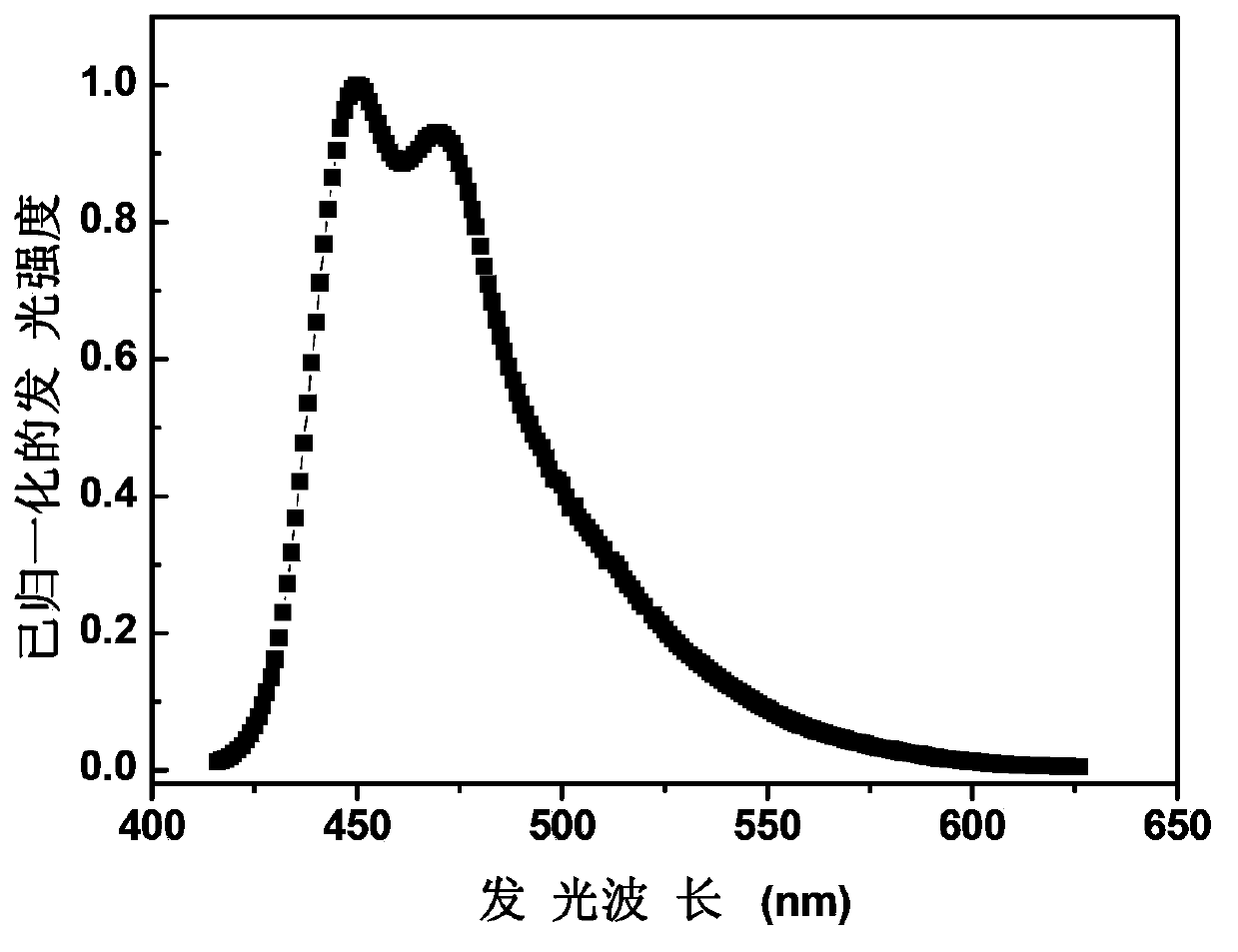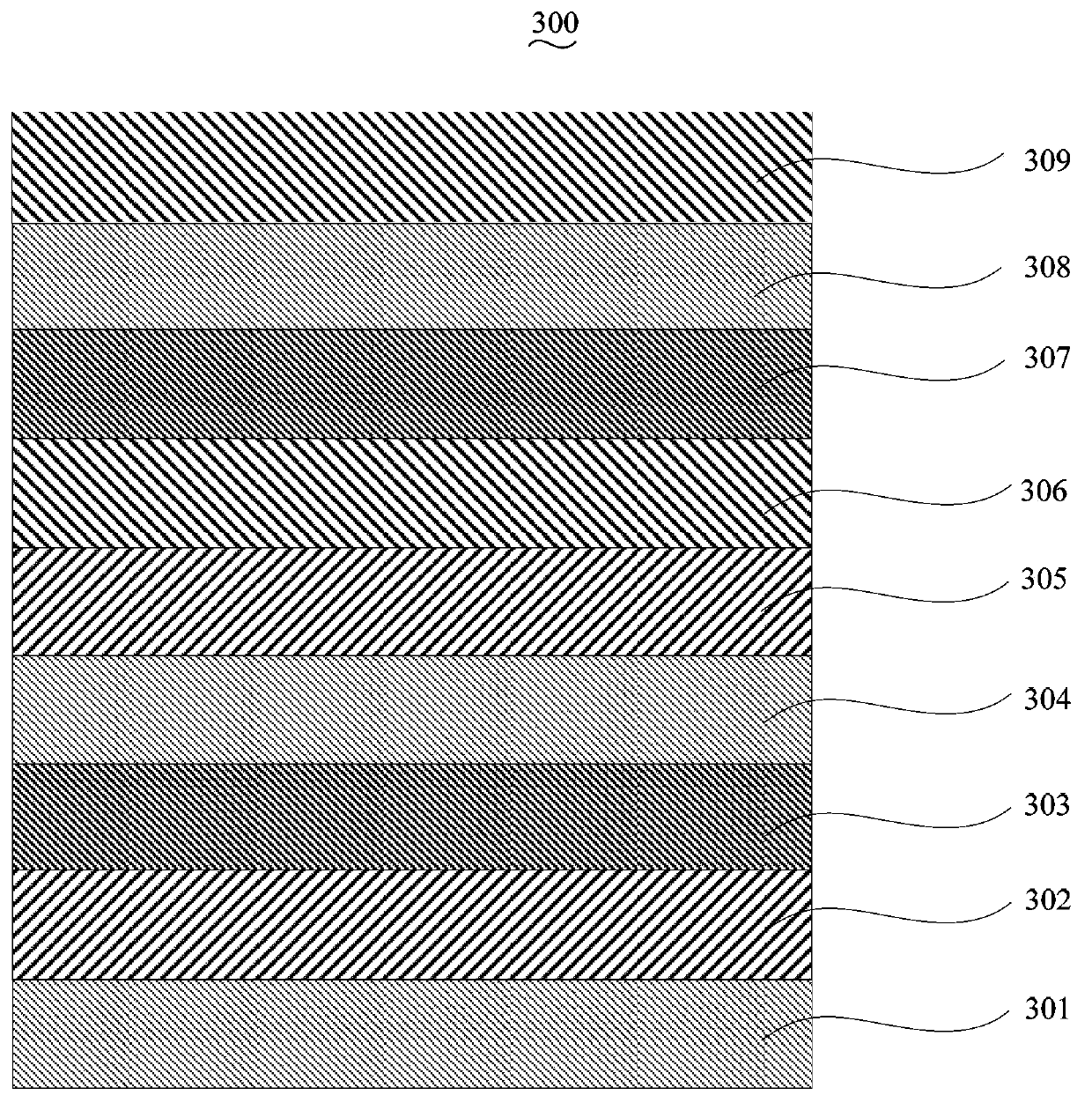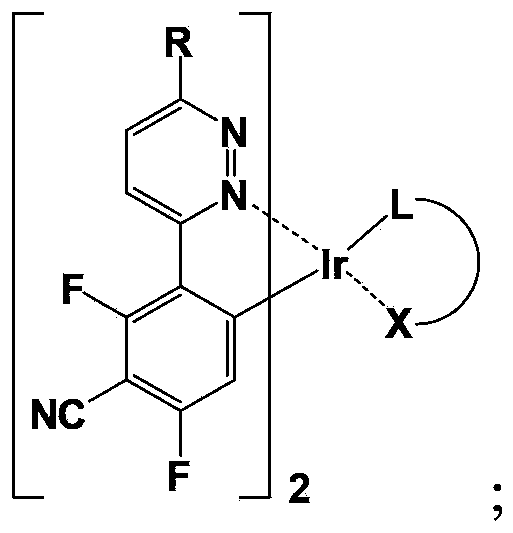Blue light-emitting organic electroluminescent material and its preparation method and use
A luminescent and electromechanical technology, applied in the direction of luminescent materials, organic chemistry, chemical instruments and methods, etc., can solve the problems of blue light luminescent material luminous color purity, luminous efficiency device efficiency attenuation bottleneck, etc., to reduce self-quenching phenomenon, improve Luminescence performance, effect of blue-shifted emission wavelength
- Summary
- Abstract
- Description
- Claims
- Application Information
AI Technical Summary
Problems solved by technology
Method used
Image
Examples
preparation example Construction
[0044] The preparation method of the above-mentioned blue-light organic electroluminescent material comprises the following steps:
[0045] S1, under the protection of an inert gas (the inert gas of the present invention includes nitrogen, argon or a mixed gas of nitrogen and argon, similar to the following), the structural formula is Compound A (due to the different substituent groups of R, its chemical name is different, please refer to each embodiment for details, the same below) and the structural formula is Compound B (2,4-difluoro-3-cyanophenylboronic acid) was added to the second phase containing tetrabutylammonium bromide (TBTA), base and rake catalyst at a molar ratio of 1:1.2. In a solvent, a mixed solution is obtained, then the mixed solution is heated to reflux, stirred and reacted for 4-10 hours, and after cooling to room temperature, the reaction solution is separated and purified to obtain the structural formula: Compound C (due to the different substituent ...
Embodiment 1
[0067] Example 1: Complex bis(3-(4',6'-difluoro-5'-cyanophenyl)pyridazine-N,C 2 ') (tetrakis (1-pyrazole) boron) synthesis of iridium
[0068] (1) Synthesis of 3-(2',4'-difluoro-3'-cyanophenyl)pyridazine
[0069]
[0070] Under nitrogen protection, 3.18g (20mmol) 3-bromopyridazine, 4.39g (24mmol) 2,4-difluoro-3-cyanophenylboronic acid, 80mL toluene, 20mL water, 3.22g (10mmol) tetrabutyl bromide Ammonium chloride (TBTA), 5.53g (40mmol) anhydrous potassium carbonate, 0.23g (0.2mmol) tetrakis (triphenylphosphine) palladium (Pd (PPh 3 ) 4 ), stirred and refluxed for 4h. After the reaction solution was cooled to room temperature, it was extracted with dichloromethane, separated, washed with water until neutral, and dried over anhydrous magnesium sulfate. After filtration, the filtrate was distilled off the solvent under reduced pressure to obtain the crude product. Silica gel column chromatography was carried out with dichloromethane as the eluent. After drying, 3.08 g of s...
Embodiment 2
[0091] Example 2: Complex bis(3-(4',6'-difluoro-5'-cyanophenyl)pyridazine-N,C 2 ') Synthesis of (3-trifluoromethyl-5-(pyridin-2'-yl)-1,2,4-triazole) iridium
[0092] (1) The synthetic steps of 3-(2',4'-difluoro-3'-cyanophenyl)pyridazine refer to Example 1;
[0093] (2) The synthesis steps of the iridium-containing dichloro dimer whose ligand is 3-(2',4'-difluoro-3'-cyanophenyl)pyridazine refer to Example 1;
[0094] (3) Complex bis(3-(4',6'-difluoro-5'-cyanophenyl)pyridazine-N,C 2 ') Synthesis of (3-trifluoromethyl-5-(pyridin-2'-yl)-1,2,4-triazole) iridium
[0095]
[0096] Under nitrogen protection, 0.64g (3mmol) 3-trifluoromethyl-5-(pyridin-2-yl)-1,2,4-triazole and 1.32g (1mmol) ligand were 3-(2', The iridium-containing dichloro dimer of 4'-difluoro-3'-cyanophenyl)pyridazine was dissolved in 60mL of 1,2-dichloroethane, under the catalysis of 0.54g (10mmol) sodium methoxide, stirred and heated The temperature was raised to reflux, and the reaction was carried out for 1...
PUM
 Login to View More
Login to View More Abstract
Description
Claims
Application Information
 Login to View More
Login to View More - R&D
- Intellectual Property
- Life Sciences
- Materials
- Tech Scout
- Unparalleled Data Quality
- Higher Quality Content
- 60% Fewer Hallucinations
Browse by: Latest US Patents, China's latest patents, Technical Efficacy Thesaurus, Application Domain, Technology Topic, Popular Technical Reports.
© 2025 PatSnap. All rights reserved.Legal|Privacy policy|Modern Slavery Act Transparency Statement|Sitemap|About US| Contact US: help@patsnap.com



